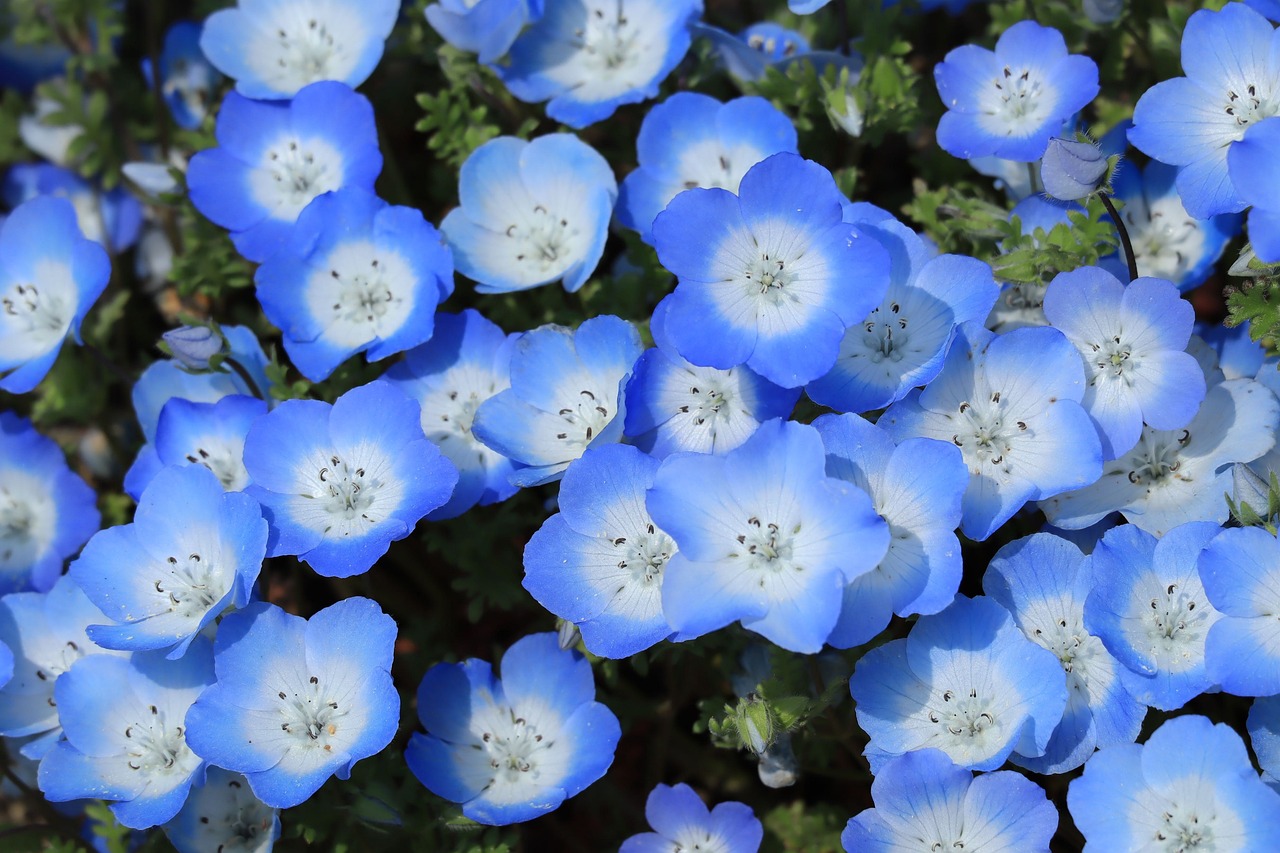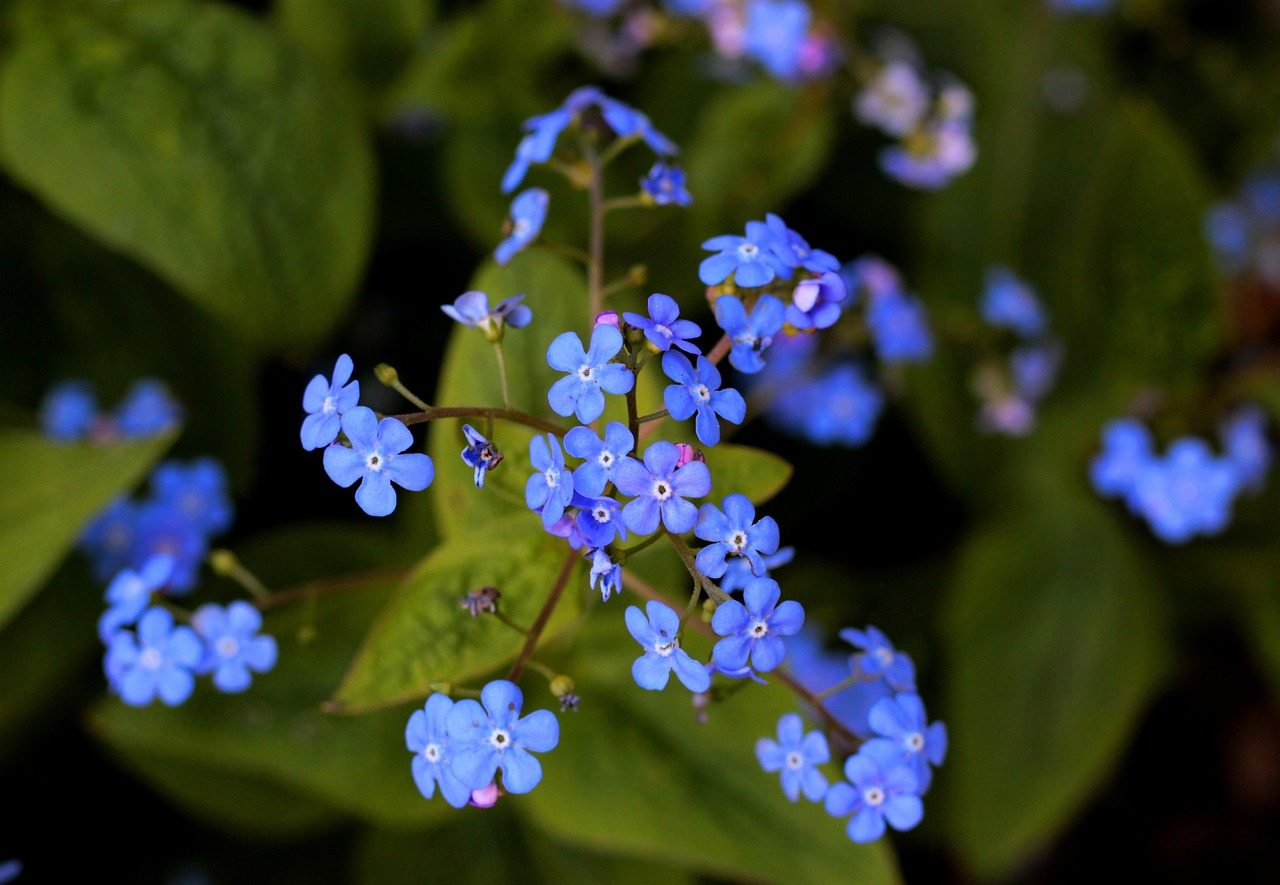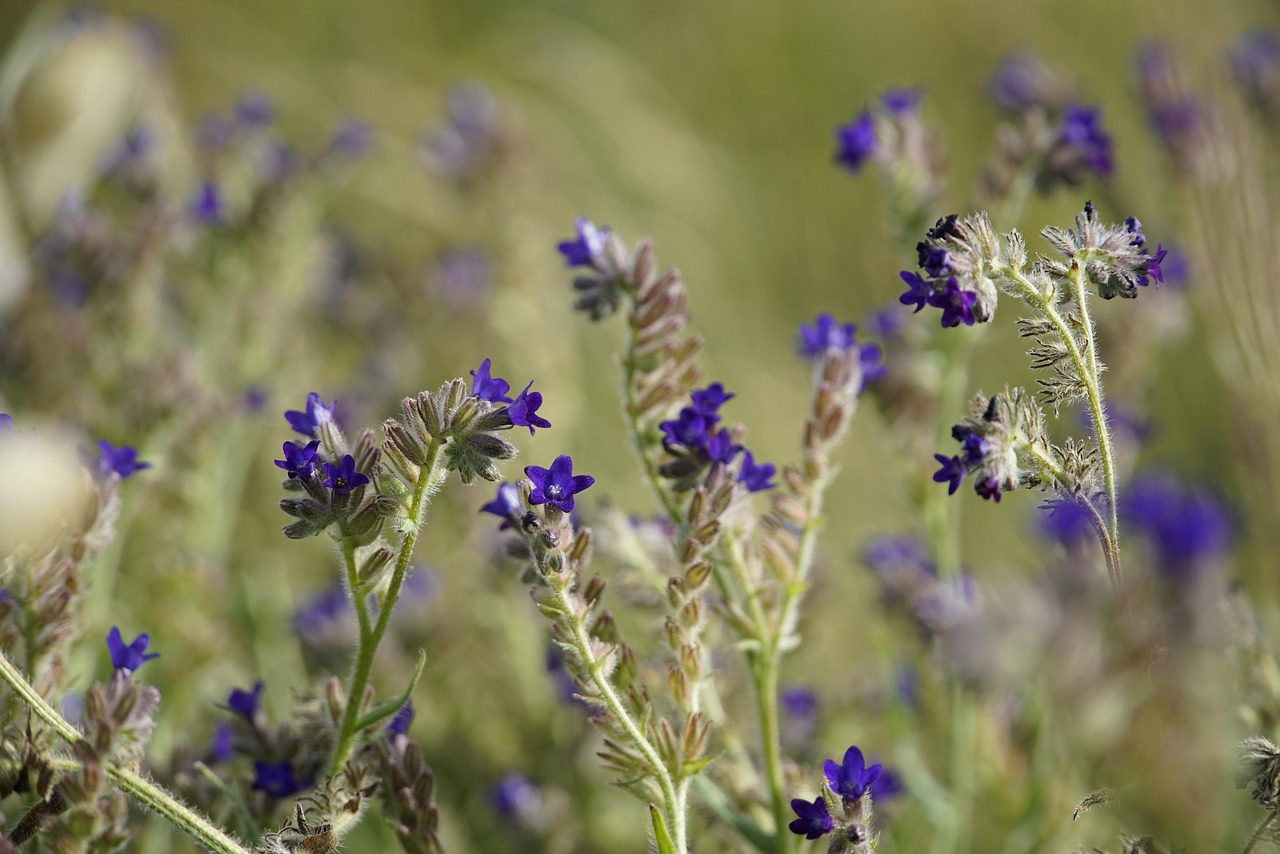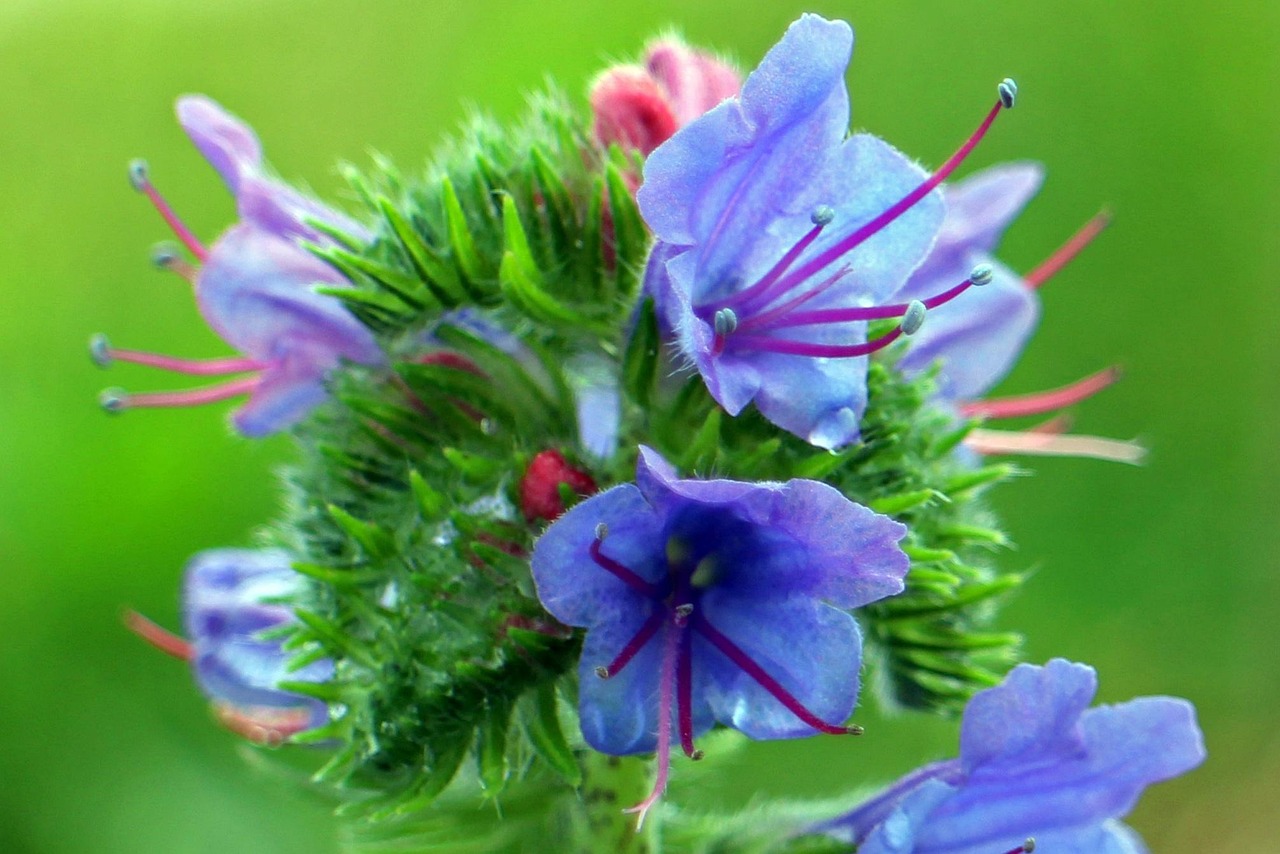Forget-me-not | A Story of Memory and Prayer Woven by Tiny Blue Blossoms
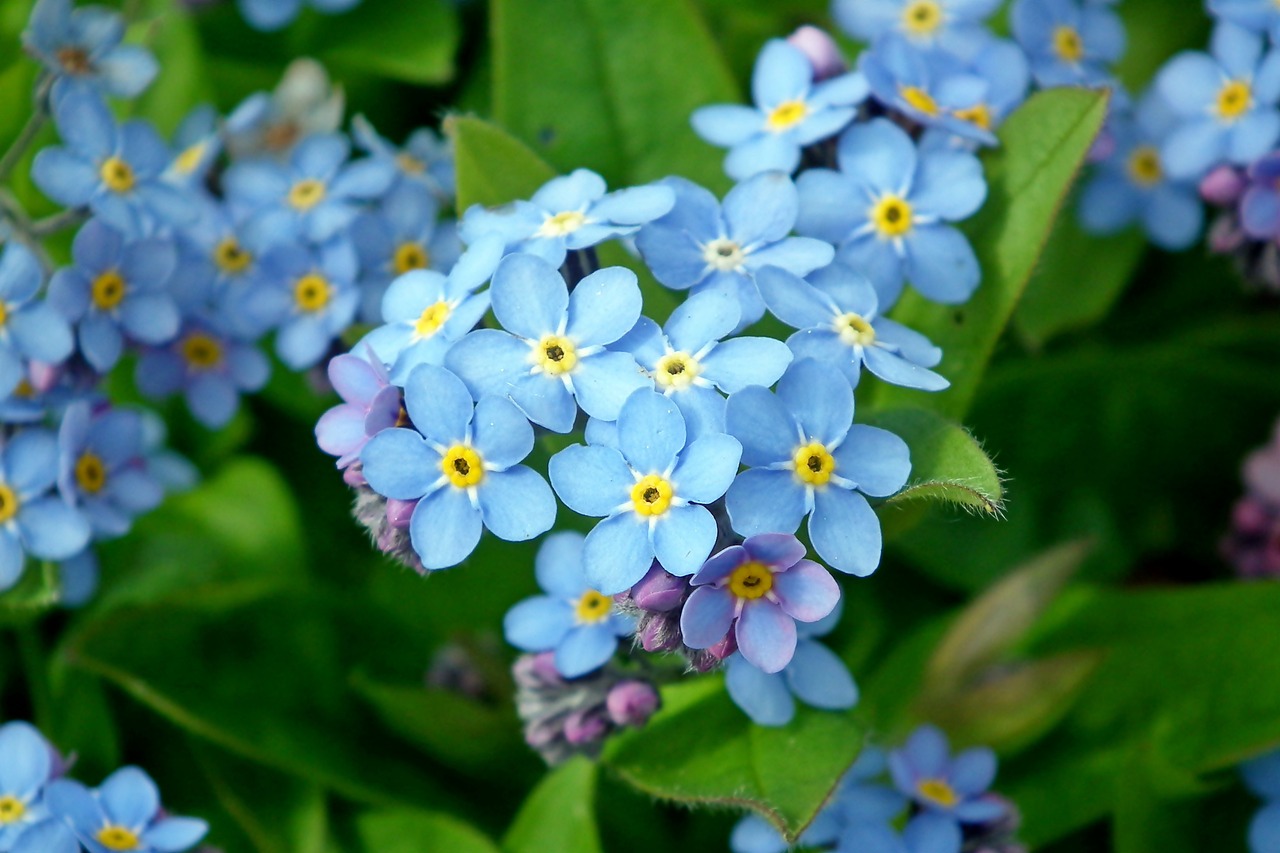
The forget-me-not is characterized by its small and charming blue flowers and, as its name suggests, carries the special meaning of “do not forget.” Since ancient times, it has appeared in many stories and legends, and has also been cherished in poetry and painting.
In this article, I will explain in detail the basic information, cultural background, and cultivation tips for the forget-me-not.
Basic Information
- Scientific name: Myosotis sylvatica
- Family: Boraginaceae
- Origin: Europe, Asia
- Appearance: A perennial plant about 15–30 cm tall, with vivid blue flowers accented by yellow centers. Its delicate petals create a graceful impression. Depending on the variety, white or pink flowers can also be seen, but the blue ones are the most well-known.
- Blooming season: From spring to early summer (April–June), making it a popular addition to garden colors.
Cultural Significance Around the World
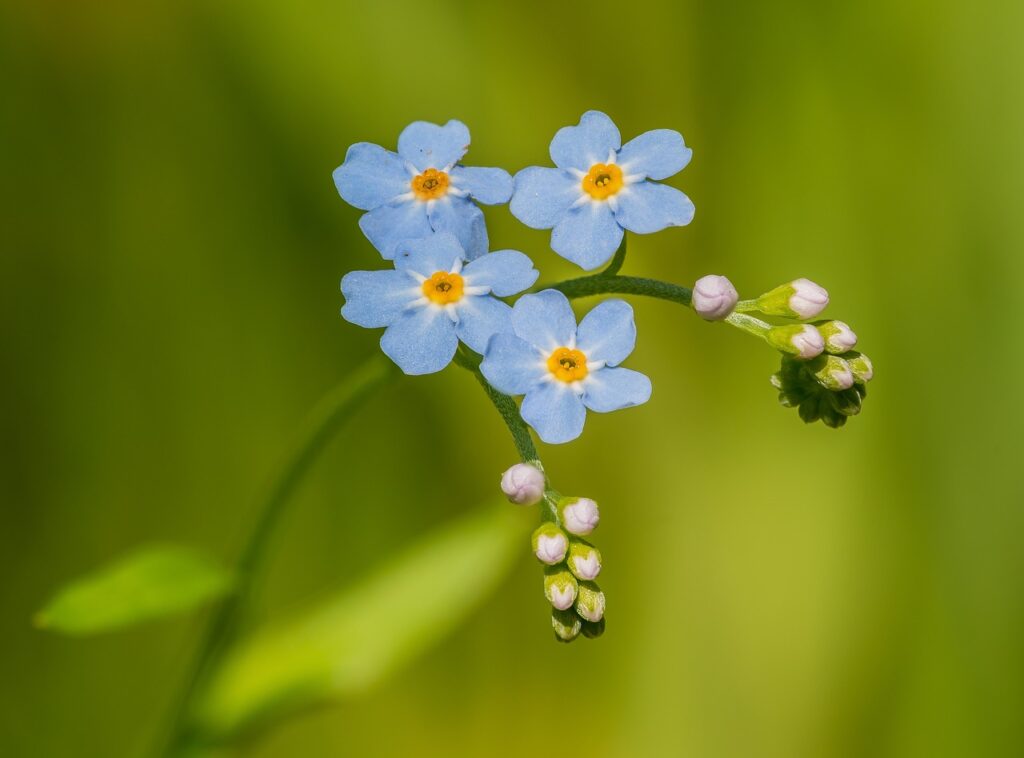
The forget-me-not has long been rooted in many cultures, especially in Europe, as a symbol of “love and memory.”
In the United Kingdom, it is regarded as a symbol of True Love and is cherished as a flower representing the special bonds between lovers and family. Couples traditionally exchanged forget-me-nots to ensure they would never forget each other’s love.
In Germany, the flower is associated with the idea of reminding people not to forget what is truly important.
In the United States, it is also used as a symbol to honor the memory of veterans.
Culturally, the forget-me-not teaches us the importance of treasuring memory and affection.
Historical Episodes
There are numerous legends about the forget-me-not, and its name itself is tied to a famous medieval European story.
According to legend, a knight, while picking blue flowers by a riverbank for his beloved, accidentally fell into the river. As he was drowning, he managed to toss the flowers to her, crying out, “Forget me not.”
This tragic story is said to be the origin of the flower’s profound meaning.
The forget-me-not was also an important emblem in European chivalric culture. Knights wore it for their loved ones, swearing never to forget their devotion even in battle.
In 19th-century Victorian England, people often enclosed forget-me-nots with letters, cherishing their connections with distant loved ones.
Gardening Advice
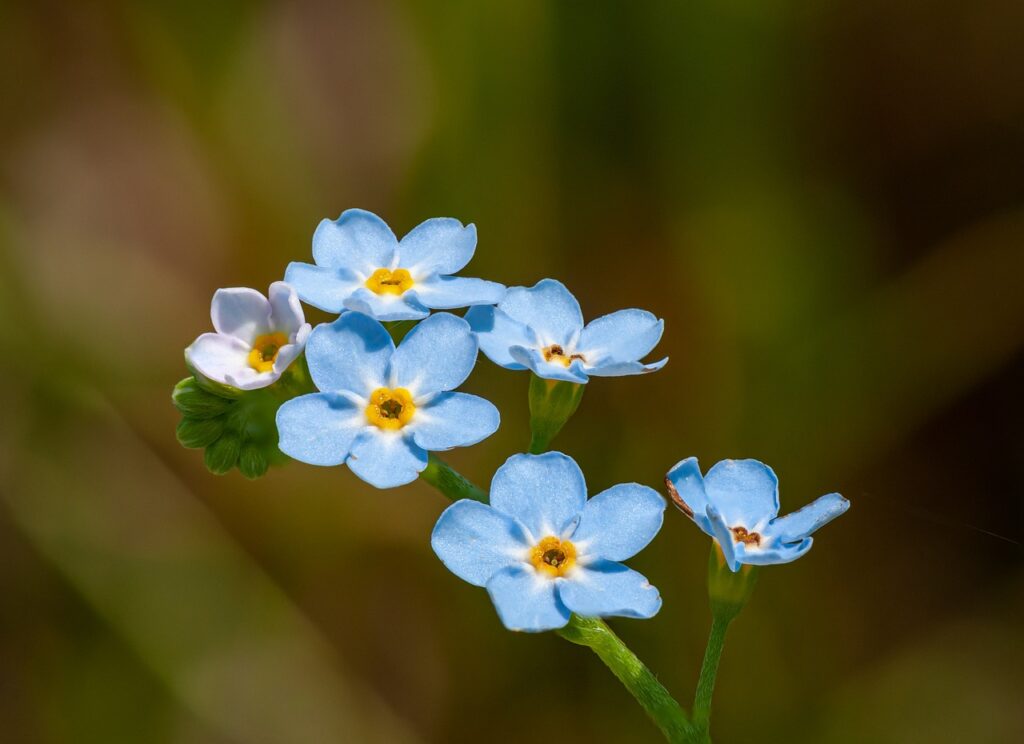
The forget-me-not prefers partial shade to sunny conditions. However, excessive direct sunlight can cause leaf scorch, so moderate shade is ideal.
Maintaining humidity is essential; avoid letting the soil dry out completely, especially during blooming. Water regularly but not excessively.
It grows best in fertile, well-drained soil. Mixing in leaf mold when planting helps ensure healthy growth.
The plant is relatively cold-resistant. When sown in spring, it blooms beautifully the following early summer.
As a perennial, its above-ground parts wither in winter, but the roots remain alive, allowing flowers to bloom again the next year. Apply fertilizer sparingly during the growing season, as over-fertilization may cause leggy growth.
After blooming, remove spent flowers promptly to encourage new blossoms. Also, thin out overcrowded clusters to improve air circulation and prevent disease.
Conclusion
The forget-me-not is attractive not only for its lovely appearance but also for its deep symbolic meaning of “do not forget.” It is relatively easy to grow even for beginners, whether in a garden bed or in pots, adding seasonal beauty to any space.
I encourage you to plant this beautiful flower and create a garden that blooms with cherished memories and bonds.

